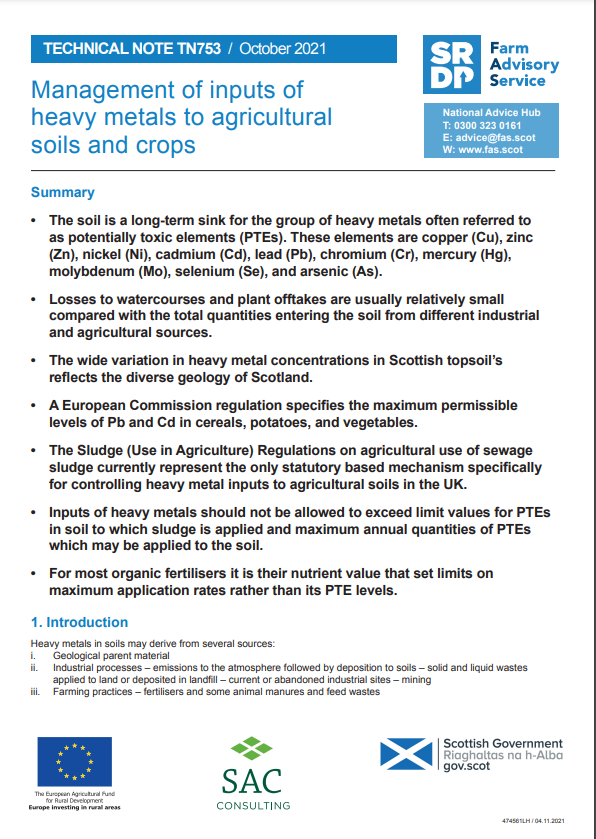Technical Note (TN753): Management of inputs of heavy metals to agricultural soils and crops
Heavy metals in soils may derive from several sources:
- Geological parent material
- Industrial processes – emissions to the atmosphere followed by deposition to soils – solid and liquid wastes applied to land or deposited in landfill – current or abandoned industrial sites – mining
- Farming practices – fertilisers and some animal manures and feed wastes
The soil is a long-term sink for the group of heavy metals often referred to as potentially toxic elements (PTEs). These elements are copper (Cu), zinc (Zn), nickel (Ni), cadmium (Cd), lead (Pb), chromium (Cr), mercury (Hg), molybdenum (Mo), selenium (Se), and arsenic (As). Losses to watercourses and plant offtakes are usually relatively small compared with the total quantities entering the soil from different industrial and agricultural sources. Therefore, they slowly accumulate in the soil over long periods of time, which can have implications for the quality of agricultural soils and reducing heavy metal inputs to soils is a strategic aim of soil protection policies. The soil maximum permissible concentrations (MPCs) for PTEs specified in the Code of Practice for Agricultural Use of Sewage Sludge were developed specifically to protect agricultural soils and have been reviewed by ADAS (2020) and deemed appropriate to protect plants, animals, and humans.
Further information on the significance of inputs of these heavy metals for agricultural soils and crops is provided in this technical note.
Read (TN753): Management of inputs of heavy metals to agricultural soils and crops here

Sign up to the FAS newsletter
Receive updates on news, events and publications from Scotland’s Farm Advisory Service
